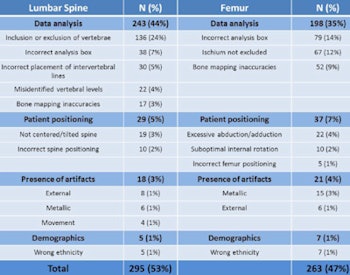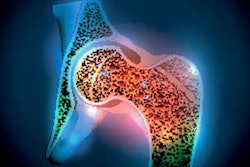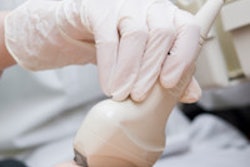
In research from a university hospital in Italy, more than 90% of dual-energy x-ray absorptiometry (DEXA) examinations contained at least one error, mainly due to data analysis. Furthermore, the authors assert that adoption of the guidelines of the International Society for Clinical Densitometry (ISCD) is very poor.
"Our study demonstrates that errors in DEXA are frequent," noted Dr. Carmelo Messina and colleagues from the University Hospital Istituto Policlinico San Donato in Milan. "Physicians should familiarize themselves with correct DEXA interpretation practice to minimize these pitfalls."
Osteoporosis is characterized by low bone mass and microarchitectural deterioration of bone tissue, causing an increase in bone fragility and predisposition to fragility fractures. It is commonly evaluated through a quantitative assessment of bone mineral density (BMD), which represents a major determinant of bone strength, they explained.
DEXA rests on numerical data, and therefore it is mandatory to strictly apply the instructions provided by manufacturers of densitometry equipment in their user manuals, as well as the recommendations of the ISCD. Inaccurate DEXA examinations may result in erroneous data interpretation and equivocal reports, according to Messina et al. In the literature, some of the most common errors occur in positioning, scan analysis, and interpretation for both the femur and lumbar spine.
Details about the group's study were presented at the 2014 meeting of the European Society of Musculoskeletal Radiology (ESSR) in Riga, Latvia. The aim was to evaluate the rate and type of errors in DEXA examinations by looking at a consecutive series of previous DEXAs provided by patients presenting for a new DEXA exam.
The retrospective study was approved by the Institutional Review Board. During 2012, 2,476 patients underwent DEXA at San Donato. Of them, 1,198 patients did not provide information about a previous DEXA examination, while 793 patients had had a previous DXA performed at the hospital but were excluded from the study. The remaining 485 patients entered the study, and were composed of 447 women and 38 men (age 68 ± 9 years, mean ± standard deviation).
A radiologist with four years of experience in DEXA and osteoporosis management reviewed all DEXA scans to check for adherence to correctness criteria according to ISCD guidelines and the users' manual of three leading manufacturers of DEXA equipment (Hologic, Lunar, and Norland Medical Systems). Errors were classified into the following four categories:
- Patient positioning (PP): Errors related to proper positioning of lumbar spine or femur
- Data analysis (DA): Postacquisition analysis errors
- Presence of artifacts: Presence of artifacts that may alter BMD
- Demographics: Inaccuracies in date of birth, gender, and ethnicity -- crucial data for the calculation of Z score and T score
Data were presented as mean ± standard deviation or as median and interquartile (IQ) range according to their distribution. The presence in each center of a clinical unit dedicated to the diagnosis and treatment of osteoporosis was recorded. Previous outsourced DEXA examinations were performed at 37 different centers, with 13 ± eight patients (mean ± standard deviation) per center.
The previous DEXA was performed one year before in 4.1% of patients, two years before in 36.1%, three years before in 53.4%, or four years before in 6.4%.
Out of 485 DEXA exams, 451 (93%) contained at least one error for a total of 558 errors:
- 441 (79%) DA
- 66 (12%) PP
- 39 (7%) artifacts
- 12 (2%) demographics
Only 42 (9%) had a DEXA with previous comparisons, for a total of 57 errors: 31 (54%) were DA, 17 (30%) PP, and 9 (16%) were scan mode discrepancies -- 57 errors overall.
','dvPres', 'clsBtn', 'true' );" >

Click image to enlarge.
Errors detected in outsourced DEXA examinations performed by 485 patients. Source: ESSR annual congress, Riga, Latvia, June 2014.
When the researchers limited the study to only 20 centers with at least 10 or more DEXA examinations, the rate of previous scans with at least one error ranged from 40% to 100%. Among these 20 centers, eight had a clinical unit dedicated to the diagnosis and treatment of osteoporosis, the authors concluded.



















